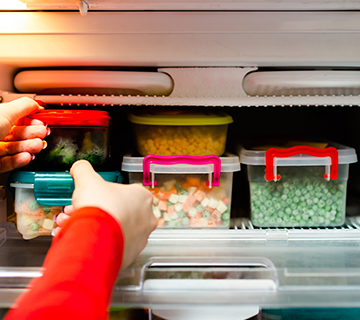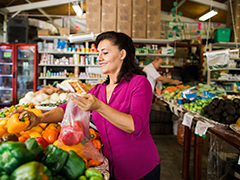How to Pick the Best Frozen Produce

Fresh vs. frozen: that’s a question you might ask yourself at the grocery store. The truth is, frozen fruit and vegetables offer similar levels of nutrition to their fresh counterparts. This is because frozen vegetables are flash-frozen right after being harvested to maintain their freshness. You can likely find frozen versions of your favorite fruit and veggies at just about any store. Frozen produce is often cheaper and lasts much longer than fresh produce, meaning you can easily add it to any meal to get your daily recommended servings.
You should know that not all frozen produce is equal, however. Before you go grocery shopping, familiarize yourself on how to identify the highest-quality frozen produce, so you know you’re eating the freshest and most nutritious of the bunch.
Feel the bag
Packages should feel firm and dry—if it’s wet, it can be a sign that it has thawed. You should also be able to feel individual pieces of fruit or vegetables inside the bag, not one giant block.
Go plain
Avoid frozen vegetables that come with added butter, sauce or salt. Likewise, skip the frozen fruit that comes with added sugar.
Look for U.S. grading
Not all packages include this, but it’s a good indication of quality. Grade A is the highest level and indicates produce that’s colorful, tasty and tender. Grade C is the lowest level and indicates produce that’s less uniform and flavorful but still fine for cooking.
When you bring frozen fruit or vegetables home, be sure to store them in the freezer so they don’t thaw. Only take out what you need to defrost when you’re getting ready to cook. If you’re looking to add more fruit and vegetables to your diet, consider signing up for the Online Health Coach and get support for eating healthier. Eligible Standard and Basic Option members may receive $40 for completing their health goals, up to three, for $120 total.



